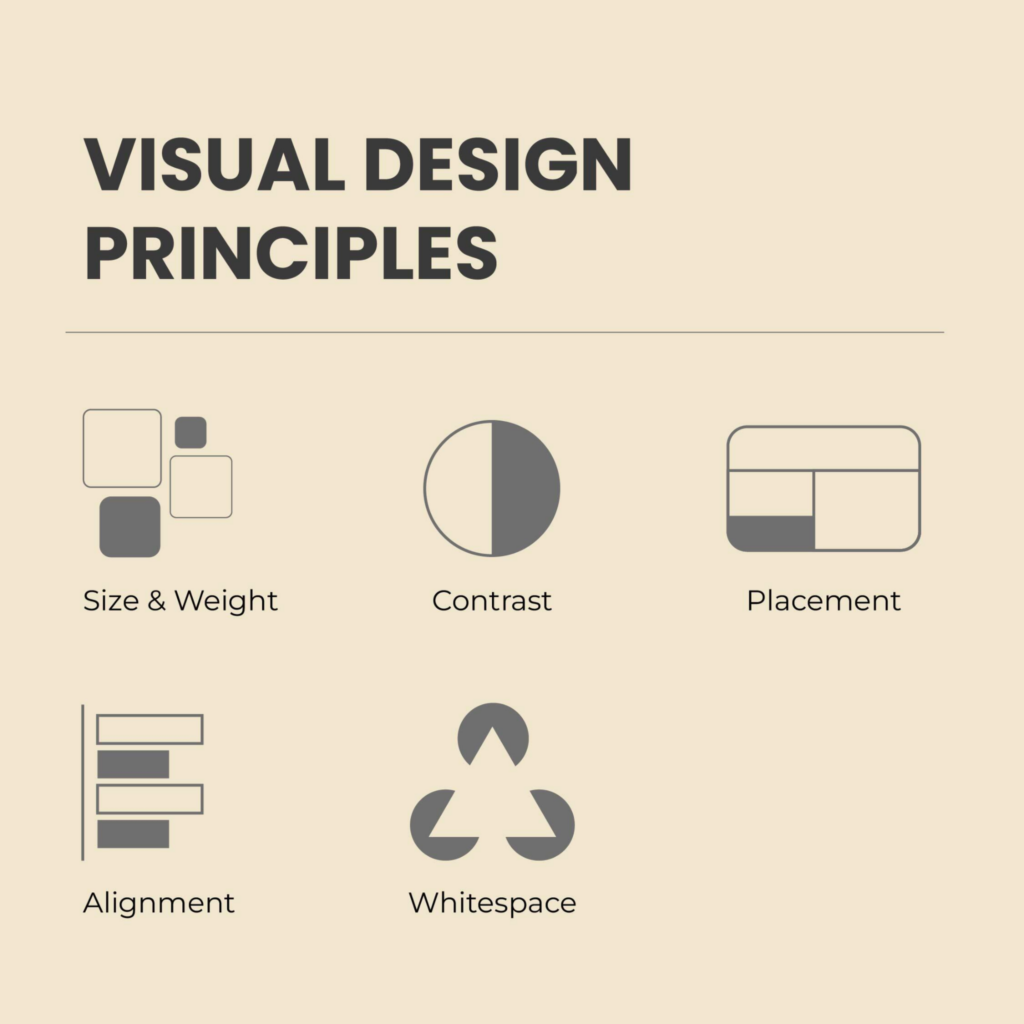“It’s not hard to make decisions when you know what your values are.”
– Roy Disney
One of the most, or perhaps, the most difficult things to do when running a business or managing a product is decision-making. Decision-making from a position of authority is never really a pleasurable activity, considering the outcome, especially in the long term. No one wants to be the source of an unfavorable result, which in turn, casts a dark shadow on the quality of the decisions.
What if there was a way to ensure that every decision taken would have a positive, if not an utterly perfect outcome?
Design Principles for Informed Decision-making
What are design principles? According to the Nielsen Norman Group, product design principles or design principles are value statements that describe the most important goals that a product or service should deliver for users and are used to frame design decisions.
Design principles are a set of values that act as a north star for your product. Think of them as a set of mutually agreed-upon truths to keep the whole team on the same page throughout the design process. Design principles have to be drafted in a way that they are specific and actionable. Specific enough that they reflect the business’ values and help take the right decisions, and broad enough to be applied across a host of situations.
The main purpose behind creating design principles is to ensure a consistent vision of what makes the product experience unique. This vision should just be limited to the product team, but be harbored at an organizational level.
Design Principles help build a better product
Product design principles are an insight into what is required to make your product click with the users. They are crucial in ensuring that the whole product team is aligned and bears a shared understanding and vocabulary of what good design means to the company and its product users. With the design principles laid down, it becomes easier to have discussions and debates about the desired user experience and visual design of your product, as they are a guide to designing the product that’s – as Goldilocks would say – ‘just right’ for your users. Most importantly, the principles help your product stay relevant in the market, and avoid being a facsimile of your competitors.
Design principles aren’t Principles of design

Product design principles are not to be confused with principles of good design, which include heuristic or usability guidelines or visual design principles. These principles are specific rules and directions related to the design of user interface (UI) elements.
Product design principles, on the other hand, are specific to the product or service that is being designed. For example, here’s what Airbnb has laid down to be its product design principles –
Unified
Each piece is part of a greater whole and should contribute positively to the system at scale. There should be no isolated features or outliers.
Universal
Airbnb is used around the world by a wide global community. Our products and visual language should be welcoming and accessible.
Iconic
We’re focused when it comes to both design and functionality. Our work should speak boldly and clearly to this focus.
Conversational
Our use of motion breathes life into our products, and allows us to communicate with users in easily understood ways.
As is clear, these set of principles do not just apply to visual design but are holistic enough to provide a sense of authority and autonomy to make more informed decisions. Design principles are typically sourced from across all design-related disciplines, such as behavioral psychology, sociology, and ergonomics. Therefore, these principles can be applied to support a wide scale of decisions, right from picking font sizes to deciding the best way to resolve complaints on consumer portals.
Establishing the need for design principles

Nothing can help establish the need to have design principles in place better than what Roy Disney said. To paraphrase his quote, when you create design principles, you are essentially establishing the values that you want your product to have. Once these values are set, all the decisions that follow are ones that maintain the integrity of those values. Design is an iterative process, and these design principles act as a guiding light to come back to throughout any disagreements, variations, or even doubts.
Design principles can withstand new hires in the design/product teams and stakeholders, even months or years after they’ve been established. As Facebook’s former VP of product design, Julie Zhou, wrote in a Medium post, ‘design principles also allow for a democratic spread of decision-making and empowerment across big teams’.
Here are a few points that help cement the need to have design principles in every organization.
Encourages everyone to harbor a design-led mindset
Design principles are a collection of value-based considerations that help guide not just the designers, but the rest of the organization in decision-making. They help amplify the design maturity of a company and bring in a commonality of thought in terms of the dos and don’ts regarding the product.
Helps the design process stay on track and on time
Design principles steer the product throughout the design process. Thanks to these, any new design directions or iterations are reviewed in the context of a shared set of principles. With a permanent context in place, it is unlikely for design discussions to turn into long-winding arguments which ensures that there are no unwarranted delays in decision-making.
Enriches the value of feedback
Giving constructive feedback to creative teams can be a tricky task, but with an already agreed-upon set of principles in place, there is a source of objective truth to refer to. Design principles are a great way to ensure that the quality of the feedback is helpful and valuable, leaving no space for personal, biased, or subjective opinions.
Helps push innovation
Design principles can come in handy to push innovation into your brainstorming sessions and UX design workshops. For example, ideation sessions using the ‘How might we…’ trigger can be more direct and focused on principles related to accessibility, endurance, or sustainability instead of moving into unchartered territory.
Acts as a guiding light in every situation
Design principles are your product’s north star in every sense of the concept. They help solidify the definition of what ‘good’ looks like and what is to be steered clear from. Therefore, during design evaluations or discussions, you will only find yourself asking, ‘does this fall in line with our principles?’ rather than wondering, ‘is this any good at all?’. Even in the case of choosing amongst multiple options, the best choice is always the one that most closely represents your design principles.
Is your company or product team contemplating the creation and implementation of design principles? What has your experience been like? Do share your thoughts in the comments below!










